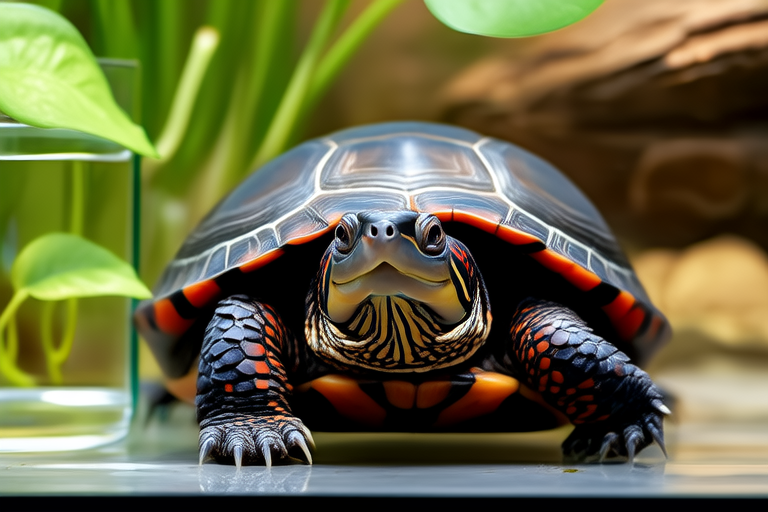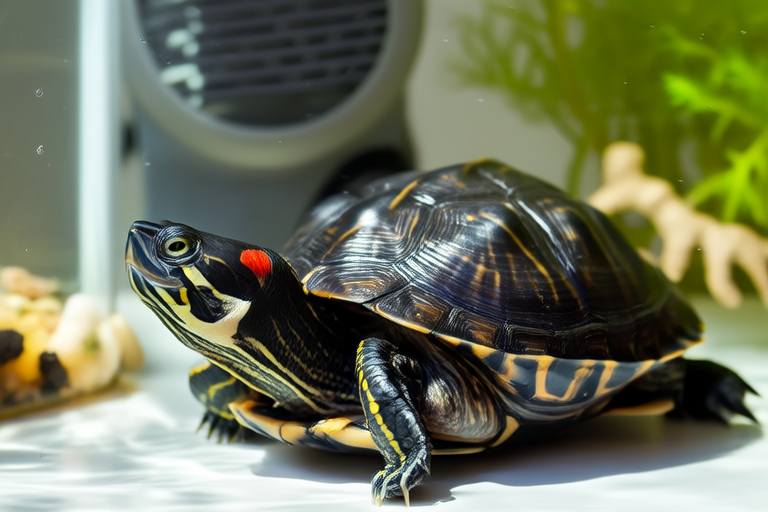How to Care for Your Red-Eared Slider Like a Pro: Ultimate Guide
Welcome to your comprehensive guide on how to care for your red-eared slider like a pro. This ultimate guide will walk you through everything you need to know about setting up the perfect habitat, maintaining water quality, providing a balanced diet, monitoring health, and addressing common issues. Whether you’re a beginner or an experienced owner, this guide aims to provide actionable advice for long-term turtle care.
Setting Up the Perfect Habitat
The first step in caring for your red-eared slider is creating a suitable habitat. These turtles require a spacious tank that provides both aquatic and basking areas.
Tank Size
For a single adult red-eared slider, a minimum tank size of 40 gallons is recommended. However, larger tanks are always better as they allow more swimming space and reduce stress on the turtle.
Aquatic and Basking Areas
Your turtle’s tank should have both a deep-water area and a dry basking area. The water depth should be at least twice the length of your turtle’s shell. The basking area can be created using a flat rock or a floating platform. Ensure that the basking area is easily accessible and provides full-body exposure to UVB light.
Heating and Lighting
Maintaining the right temperature is crucial for your turtle’s health. Water temperatures should be between 75-80°F (24-27°C), while the basking area should reach around 90-95°F (32-35°C). Use submersible heaters and a high-quality UVB light source to achieve these temperatures.
Maintaining Water Quality
Water quality directly impacts your turtle’s health. Regular cleaning and maintenance are necessary to prevent infections and diseases.
Filtration
Invest in a powerful filtration system that can handle the tank size. Filters help maintain clean water by removing waste and debris. Regularly check and clean the filter to ensure it’s functioning properly.
Water Changes
Change 10-20% of the water weekly and perform a complete water change every two to four weeks. Always use dechlorinated water to avoid harmful chemicals.
Diet Specifics
A balanced diet is key to your turtle’s health and longevity. Red-eared sliders are omnivores, meaning they eat both plant and animal matter.
Protein Sources
Insects, fish, and commercially available turtle pellets are excellent sources of protein. Feed young turtles daily, reducing the frequency to every other day as they grow older.
Vegetables and Fruits
Leafy greens such as romaine lettuce, kale, and collard greens are great additions to their diet. Offer fruits sparingly as treats. Ensure all food items are finely chopped or shredded to make them easier to eat.
Health Monitoring
Regular health checks are vital to catch any potential issues early. Here’s what to look out for:
Shell Condition
A healthy shell is smooth and free from cracks or discoloration. Any signs of softness, discoloration, or unusual growth could indicate a problem.
Eyes and Mouth
Healthy eyes should be clear and free from discharge. A healthy mouth will show no signs of swelling, lesions, or abnormal coloration.
Common Issues and Solutions
Even with the best care, red-eared sliders may encounter some common health issues. Here’s how to address them:
Respiratory Infections
Symptoms include runny nose, wheezing, and lethargy. Maintain proper water temperature and ensure adequate ventilation. Consult a veterinarian if symptoms persist.
Metabolic Bone Disease (MBD)
MBD is caused by calcium deficiency and poor UVB lighting. Ensure your turtle has access to calcium-rich foods and a strong UVB light source.
Behavioral Considerations
Red-eared sliders are social animals and can become stressed if kept alone for extended periods. If possible, keep multiple turtles together. However, ensure there’s enough space and resources for each turtle.
Long-Term Turtle Care
Consistency is key to long-term turtle care. Establish a routine for feeding, cleaning, and health checks. Stay informed about new developments in turtle care and adjust your practices accordingly.
Conclusion
Caring for a red-eared slider requires dedication and attention to detail. By following this guide, you’ll create a balanced environment that promotes your turtle’s physical and mental well-being. Remember, a happy turtle is a healthy turtle!

